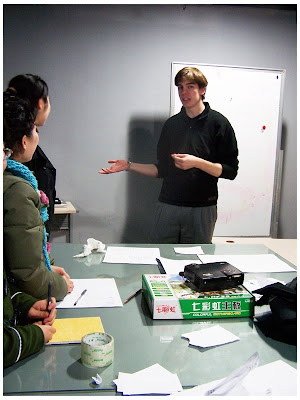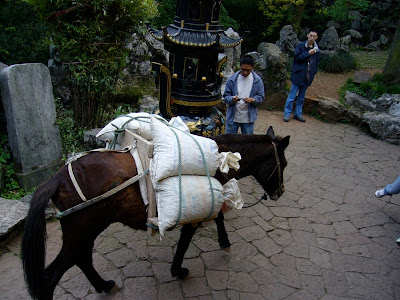
Downtown Hangzhou is a series of long shopping streets that seem to be always populated and bustling. Although it has its share of restaurants and other food vendors, most shops are fashion or sports goods in this area.
At the south of the main CBD, there is a traditional street (Hefang Jie) that sells a lot of old wares and has some famous tea houses. Further north and closer to the lake, there is a more expensive area that has some of the better brands as well as more restaurants and hangout spots. There are clubs and other night culture venues throughout the central city, although we did not go to these much as ZJU students were rarely interested in them. As well as stores, they had what people called 'the markets' which are enclosed alleyways in some building that were full of tiny shops and often very crowded. Many of these would extend under the ground a few floors and above ground 5 or 6 floors. They would be full of many kinds of fashion products and accessories and bargaining is expected. The target market is generally girls under twenty five; however, most of the larger facilities catered for a larger demographic.
Throughout my stay I often walked through the central streets of the city to go shopping or to find a new restaurant. However, most things available did not suit or fit appropriately. For obvious reasons, shoes that fit me are not common in China. However, while I was there, I did find some that were too big and I eventually bought a pair in the CBD, although they have proved to not be too comfortable. I think they have culture on their side because they need not create fitting options for more than a few races of Chinese.


